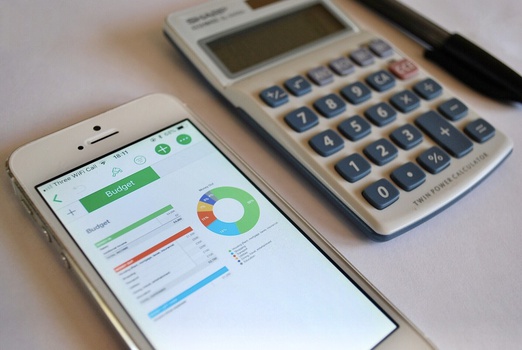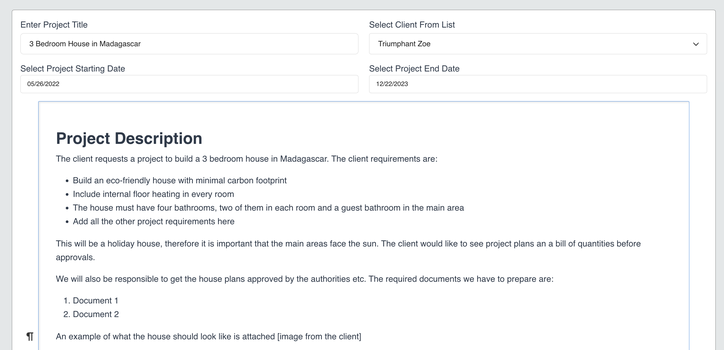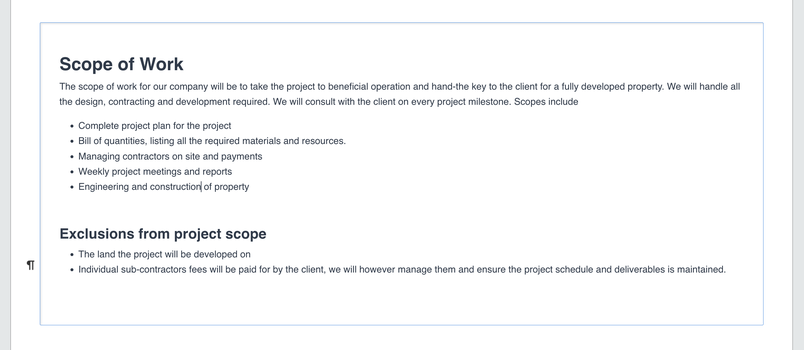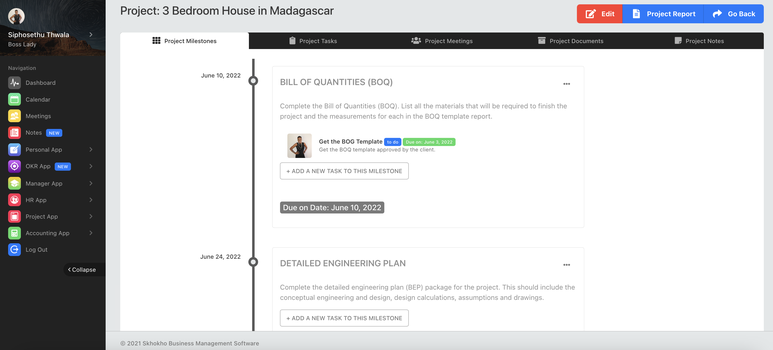How to Write a Project Plan: A Step-By-Step Guide
In this article we will be discussing a step-by-step guide on how to write a project plan. We will go through the structure of a good project plan, present some examples and tools to get you started, and give some tips on how to ensure the success of your project.
Creating a project plan is essential to the success of any project. A project plan outlines the goals, objectives, milestones, and deliverables of a project. It also provides a timeline for the completion of the project and assigns responsibility for each task.
A good project plan should be:
- SMART: Specific, Measurable, Achievable, Realistic, and Time-bound
- Detailed: Include all information necessary to complete the project
- Flexible: Allow for changes and unforeseen circumstances
- Realistic: Set achievable goals and milestones

What is a project plan?
It is important to get a good understanding of what a project plan is and what a project plan is not. A project plan is a document that outlines the high-level details of a project. It includes the project’s objectives, timeline, and budget. A project plan is also known as a project management plan.
Creating a project plan can seem like a daunting task, but it doesn’t have to be. This step-by-step guide will show you how to write a project plan that is clear, concise, and easy to understand.
There are high level steps to take when creating a project plan, everything else you do can fit in to one of these four high level steps:
Step 1: Define the project’s objectives
The first step in creating a project plan is to define the project’s objectives. What is the project trying to achieve? What are the goals that need to be met? Once you have a clear understanding of the objectives, you can proceed with the project plan writing.
These goals can then be developed in to deliverables for the project. For example - of you had a project to develop a website - your final objective will be a working website, but that objective can be broken down in to specific deliverables or steps in the project.
Those specific steps can then be developed in to project milestones.

It is important at this stage, that you communicate with your client your objectives and align on the high level points before proceeding with the next steps.
Step 2: Develop a timeline
The next step is to develop a timeline for the project. When do you expect to complete each task? When do you expect to achieve the objectives? Having a clear timeline will help you stay on track and avoid any unnecessary delays.
At this stage you should have a deliverable list - a list of specific items you will be delivering for the project. You can then take this list and assign due-dates for each deliverable. The final project timeline will depend on the due-dates of each project deliverable.
Step 3: Set a budget
The third step is to set a budget for the project. How much money do you have to spend? What are the project’s costs? Having a clear budget will help you stay on track and avoid any overspending.
Simplify this task by assigning a cost to each deliverable on your list. if we go back to our website example, one fo the deliverable might be:
- Set up web-hosting
Answer the question - how much will it cost to complete this deliverable? We will break down project costing later in the blog, but at a high level, the entire project budget, is built up from individual elements from project deliverable cost.

Send the client a quote: Clients usually want to see a project quote before committing to a project. You can set up a high level project plan with deliverables and costs attached to each deliverable to show the client.
Step 4: Project Plan Writing
The fourth and final step is to write the project plan. This is where you put all of the information from the previous steps into a document. The project plan should be clear, concise, and easy to understand. It should also be flexible enough to accommodate any changes that may occur during the project.
We will show you how to use Skhokho Project Management tools to create a detailed, structured project plan that you can share with your clients. Skhokho is smart and intuitive, creating guidelines that anyone can follow to write a great project plan.
Why write a project plan in the first place?
This might seem like an obvious question, but an important one to answer at the beginning. You might be writing a project plan because your boss asked you to, or your client requested one without fully understanding the real power of a project plan and why it is important that YOU as a project manager, have a clear and concise project plan.
When starting any kind of project, whether it be for school, work, or even just a personal project, it is always important to have some sort of plan in place.

So why is it so important to have a project plan? There are a few key reasons:
1. Helps to keep you organized
When starting a project, it is easy to get overwhelmed by all the different elements that need to be taken into account. A project plan can help to keep you organized by laying out all the important aspects of the project in one place.
This is especially useful if you are working in a team, or are running multiple projects over a longer period of time. It can be easy to lose information between team members and mis-align on important project elements.
2. Defines the scope of the project
It is important to have a clear understanding of what the project you are working on entails. A project plan can help to define the scope of the project by outlining all the deliverables that need to be met.
This helps everyone involved understand what needs to be done.
3. Helps to identify potential risks
No project is without risks. By identifying potential risks early on, you can be better prepared to deal with them should they arise. When risks are identified in the project plan - they can be added to a risk-management plan or matrix and managed during project execution.
4. Sets clear expectations
It is important to set clear expectations for both yourself and others involved in the project. A project plan can help to do this by outlining the timeline and milestones for the project.
5. Provides a clear roadmap
The project plan is essentially the roadmap for your project. It can help to keep you on track and ensure that you are making progress towards your goal.
How to write a project plan: A full example
In this section we will go through a full example of a project plan. The scenario will be: A client requests a holiday house in Madagascar. So the project name will be:
Build a 3 bedroom house in Madagascar
We will be using Skhokho Project Management Software to write the project report. Skhokho is a cloud based Business Management Software, with built in Project Management Tools that you can use to develop a project report like this one.
Why you want to use Skhokho to create your project plan - step-by-step
- There are already built in, guidelines to get you started, even if you have never written a project report before.
- Collaboration - all information is stored in a secure cloud, you can access it from anywhere, share with your team and clients.
- The records will always be there - if you change project managers, client contacts, records remain preserved in one place.
- Skhokho simplifies project management with easy to understand tools in one place - add client profiles, produce quotes and invoices etc.

👉🏽 How to write a project plan - The Project Details
It is important that we write down the project details as we understand them from the client. This is written account of the client brief, if the client had provided some sort of Request of Proposal (RPF) or Project Brief - you would literally copy and paste content from there for the project details.
Purpose of writing this section:
The reason why we want to write this section, is to articulate in our own words the client request and send it back to them to align on what the expectations are. In this section you want to be:
(1) as detailed as possible,
(2) Focus on facts, not interpretations,
(2) Use SMART writing
Project Plan Example: 3 Bedroom House in Madagascar
In our project example, the project details will go in to the first part of the project report. You can navigate here using the instructions here from the documentation:
https://skhokho.io/documentation/project/project.html#project-list
Enter the project name, select client (Make sure you have already created a client record before you get started here - you can use this guide to create a new client record: https://skhokho.io/documentation/project/clients.html#client-list ). Enter project start and end dates - you can change this later after creating a more detailed schedule.
Then enter the project details like so:

💼 How to write a project plan - Scope of Work and Exclusions
The next step is to be clear about the scope of work and exclusions. This section and the section above is simmilar, the only difference is that you specify what is included and excluded from the scope of work.
For example in our project - it might not be clear if we are also responsible for providing the land the house will be built on. It sounds like an obvious thing, but in professional settings - these are the types of grey areas than can lead to disputes and confusion.
In a way - this part of the project plan aims to reduce grey areas and draw a firm line on what we are responsible for as the project execution team and what is excluded from our scope.
This example would look like so:

What is even more important than the scope of deliverables is the exclusions, what we are not responsible for.
👩💻 How to write a project plan - The Deliverables, Risks and Assumptions
In this section of the project plan, we will focus on three main points:
- Project Deliverables
- Project Risks
- Project Assumptions
If you are managing a complex project, you might want to have a specific section for each of these points. The project risks specifically need to go in to a Project Risk Management plan, which will include a risk matrix that you will track on a regular basis. This is not included in the project plan - but specifying the high level risks here, gives guidance to the rest of the risk plan.
That project risk plan will be built based on the high level risks identified here.

How to write Project Deliverables
Describe the project deliverables, based on the project scope and project description you have already developed. Detail specific units of scope that you can deliver at specific times - this will form the foundation of your project milestones. Each project milestone will represent a project deliverable and you will be able to assign dates to milestones.
How to write Project Risks
Identify potential risks to the project schedule, project budget, or project quality. These risks could be internal to your organization or external. Think about what could go wrong and how that would impact your project.
A project risk plan will take these risks and rate them based on probability and consequence in a risk matrix. The high level high probability and high consequence risks will be addressed first and so on.
How to write Project Assumptions
List out any assumptions that you are making about the project. These could be assumptions about the environment, about the stakeholders, about the technology, etc. Be sure to validate your assumptions with stakeholders as part of your project planning process.
Project assumptions are almost an extension of the project risks. If you have made an assumption that turns out to be false, it could present a potential risk to the project.
For example you assume that you will have 10 contractors on site and it turns out you can only get 5 - this becomes a risk to your project schedule and costs, it will take longer to complete the work with fewer men. If you have to hire equipment for longer because it takes longer to complete the work, your costs will rocket too and so on.
🎯 How to write a project plan - DevelopingProject Milestones
The next step is to take the items listed in the project deliverables and assign start and end dates to them. You can do this in excel or use Skhokho Milestones to record this. You will need to navigate from the “create project” page to the project milestones.
Skhokho makes it easy to record milestones and will list them for you in a timeline format. You can then start - assigning specific tasks to each milestone. You can create a task, assign a responsible person and assign the milestone the task is associated with.

This helps you keep track of the specific details of what needs to be done to achieve each milestone and who will be responsible for each task - and the dates the tasks are due.
💵 How to write a project plan: Developing the project cost
There are many ways to develop a cost estimate, but one of the most common is to use the square footage method. This involves taking the total square footage of the project and multiplying it by the estimated cost per square foot.
For our 3 bedroom house in Madagascar, we will assume an estimated cost of $100 per square foot. This gives us a total estimated cost of $300,000 for the project.
Next, you need to develop a project budget. This budget should include all of the costs associated with the project, from start to finish. This includes the cost of materials, labor, permits, and any other fees associated with the project.
When developing your budget, it is important to be realistic and to allow for some flexibility. Costs can always change and there may be unexpected expenses along the way. A good rule of thumb is to budget for 10-15% more than your estimated cost. This will give you some wiggle room in your budget and help to ensure that you do not go over budget.
💃💃 Writing a Project Plan - Print the Project Plan Report
You are now done with your project plan, you can click on the “project report” button and print it out in PDF, share it with the client. Your project plan should look like this:

You can use the cost estimate and develop a quote for the client using Skhokho Accounting Software.









